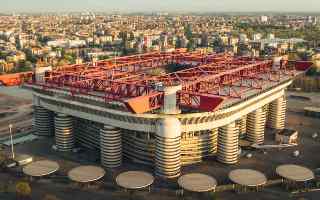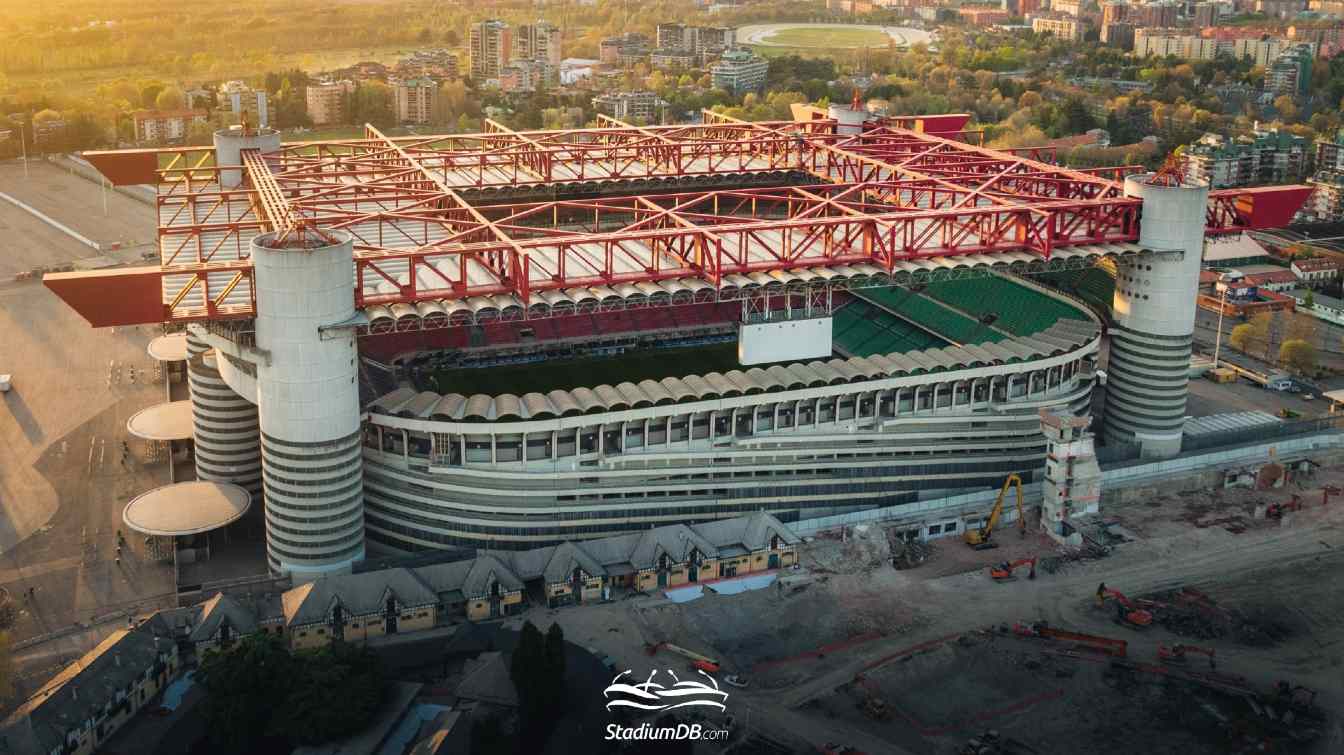Italy: Ongoing debates over Inter and Milan's new stadium
source: StadiumDB.com; author: Paulina Skóra
 The future of San Siro and the construction of a new stadium nearby continue to stir debate. Discussions focus on the stadium's design, its impact on Inter and Milan, and, most importantly, its effects on the surrounding area.
The future of San Siro and the construction of a new stadium nearby continue to stir debate. Discussions focus on the stadium's design, its impact on Inter and Milan, and, most importantly, its effects on the surrounding area.
Advertisement
Green spaces and environmental quality
The main controversy revolves around the amount and quality of green spaces in the San Siro area after the construction of the new stadium and the near-total demolition of the Meazza. Specifically, concerns arise over the proportion of permeable green spaces—those allowing water to seep into the ground, making them environmentally valuable—potentially being smaller than initially promised. This issue stems from the feasibility study presented by Inter and Milan, which was made public by Palazzo Marino along with the resolution to begin collecting bids from potential buyers of the Meazza stadium and surrounding land.
The document states that designers have met the goal of keeping at least 50% of the area as green space, in line with city council requirements following public debates on the stadium. Including paved pathways and public spaces connected to green areas, this percentage increases to 52.67%. Regarding permeable greenery—highlighted in Milan's urban planning guidelines (Pgt)—the post-project surface area would exceed the current 50,000 m² (essentially the existing Captains' Park), thereby complying with construction regulations.
Parking lots instead of "authentic" green areas
Detailed data indicate that on-ground greenery
(permeable and not merely decorative) would cover 51,984 m², or 18.51% of the total site. This means less than one-fifth of San Siro would be truly green, and its area would only slightly surpass the current level of permeable land. Furthermore, when comparing the green space map with the new underground parking plans set to replace the Meazza, it appears that some of this on-ground greenery
will be directly above parking structures.
As noted, permeable greenery plays a crucial role in improving environmental quality and managing rainwater. Milan has committed to increasing it, yet maps in the feasibility study for the new stadium suggest the opposite may be happening.
Who will cover the demolition and land reclamation costs?
A real assessment of the project's impact on the neighborhood and city must consider not only the movement of heavy machinery, material transport, demolitions, construction, and increased traffic but also the level of ground and soil sealing,
commented Enrico Fedrighini, a city councilor from Palazzo Marino's mixed group. In theory, Milan aims to reduce land consumption and soil sealing while decreasing traffic congestion. Here, however, we're seeing the opposite: increased soil sealing and expanded spaces dedicated to private vehicle traffic seven days a week.
The mayor emphasized that the Meazza's demolition will adhere to regulations. Responsibility for the stadium's future rests with the clubs—if they purchase it, the decision to renovate, demolish, or modernize it will be theirs. The city does not plan to contribute financially to these efforts. The scope of land reclamation remains undefined, pending further assessment. However, it is expected to be minimal since the site lacks an industrial history. The city also aims to preserve at least half of the area as green space and develop services meeting local residents' needs.
Compensation for residents
Another point of contention is the use of funds from selling San Siro and the adjacent land. If the stadium is sold, the key issue—left to the City Council—will be deciding how to use these funds. I propose they go to district residents, considering we're talking about 7-8 years of construction work,
said Mayor Beppe Sala. He views this as compensation for the community, which will endure prolonged disruptions. Today, construction techniques are less invasive than before. I say this after visiting the new Milan thermal baths, where an impressive project was completed without disturbing residents. However, I still believe the community deserves some form of compensation, given the 7-8 years of work ahead. Funds were already earmarked for this purpose, and I reiterate that they should be directed toward the local population.
Stadium opening in five years?
Inter president Beppe Marotta addressed the stadium's future during a meeting with Inter Club. About 15 days ago, together with Milan, we submitted our bid to purchase San Siro and the surrounding land to the Milan City Council. A public auction will follow, allowing other interested parties to participate. Our goal is to acquire the site, though we must navigate administrative procedures. If everything proceeds as planned, construction could begin in 2027, with the new stadium opening in 2030. These are our projected timelines, and I'm optimistic we can meet them,
he stated. During his speech, Marotta also reflected on San Siro's historic significance, recalling Inter's 1965 European Cup victory, which he witnessed at the stadium. He listed the legendary lineup from that match: Sarti, Burgnich, Facchetti, Bedin, Guarneri, Picchi, Jair, Mazzola, Peirò, Suarez, Corso. However, he emphasized that the club is looking to the future and, in line with the new owner's vision, is committed to building a modern stadium.
Advertisement

 StadiumDB
StadiumDB
